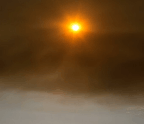A Flurry of Tiny Moons Around Jupiter
Four hundred years after Galileo discovered the planet’s biggest satellites, astronomers are still finding the smallest ones.
by Marina Koren
Jul 17, 2018
3 minutes

If you ranked the planets of the solar system by the number of their moons, Jupiter would reign.
Jupiter, the biggest planet in our cosmic neighborhood—and perhaps the most photogenic one—is circled by a surfeit of objects. Some of them are truly massive, veritable worlds of their own, like icy Europa, and volcanic Io, and sparkling Ganymede. Some are tiny things, measuring just several miles across. And even today, when our solar system feels downright familiar in comparison with the darkness beyond its edges, some of Jupiter’s moons are still being discovered.
The International Astronomical Union’s to Jupiter’s roster, bolstering its place at the top of the most-moons list.
You’re reading a preview, subscribe to read more.
Start your free 30 days





